| |
|
|
|
|
|
|
|
|
|
|
| |
| |
 |
|
| |
田润德
编译文/图 2020-07-30
20:36 |
|
| |
|
|
|
|
| |
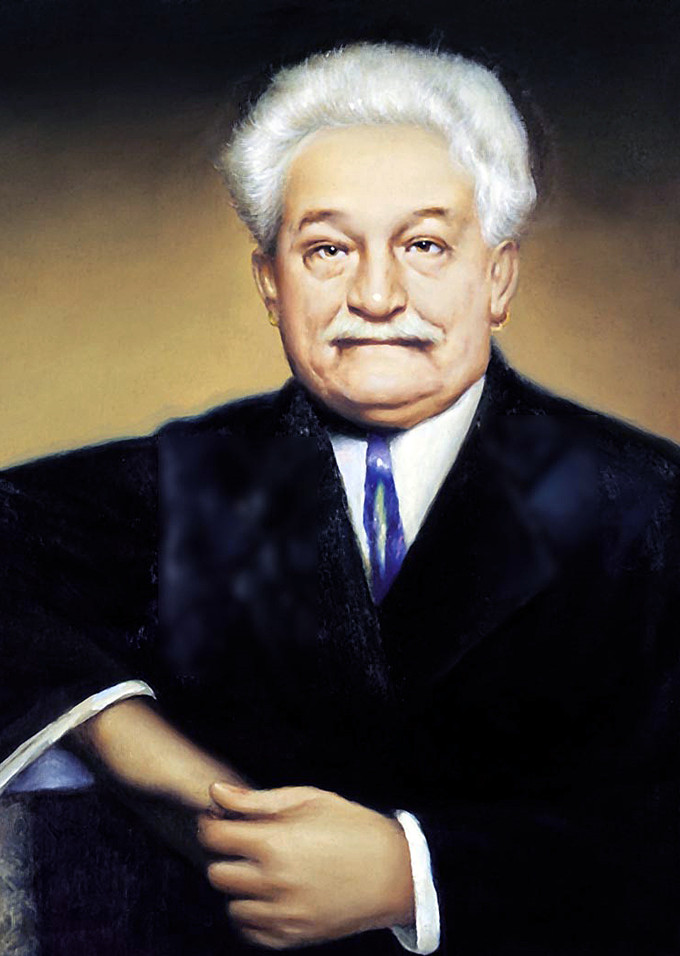 |
|
|
|
| |
莱奥什·亚纳切克(Leos
Janacek,1854—1928) |
|
|
|
| |
|
|
|
|
| |
库宾四重奏组演奏
雅纳切克第一弦乐四重奏《克鲁采奏鸣曲》
|
|
|
|
| |
演奏:L`卡珀、J·尼德尔、P·维泰柯、j.哈努塞克 |
|
|
|
| |
Leoš
Janáček : String Quartet No.1 ' Kreutzer Sonata '
KUBIN QUARTET : L.CAP, J.NIEDERLE, P.VÍTEK, J.HANOUSEK
Live Concert, OSTRAVA 28.1.2013 |
|
|
|
| |
|
|
|
|
| |
音乐历史上的今天
1928年7月30日,75岁的亚纳切克开始了在胡克瓦尔迪的重大旅行,同行的有他的情人卡米拉.斯托斯罗娃(Kamila
Stosslova,1891——1935)、她的丈夫和他们11岁的儿子。
莱奥什·亚纳切克( Janáček, Leoš 1854-1928
)一生漫长多产,富有创意,究其根本,是他缓慢而耐心成就的精湛技艺。最大的成就是一系列独到的歌剧,热情洋溢而不失生动活泼,为同时期音乐家所望尘莫及。
亚纳切克是摩拉维亚(后为捷克斯洛伐克)一个乡村校长的儿子。他的音乐生涯起始于在布尔诺的圣奥古斯丁隐修院合唱团指挥。无论是独唱还是合唱,人声总是他灵感的源泉。他接受教师培训并获得了普通教师资格,活跃于布尔诺的音乐舞台,其间大部分时间担任教员与合唱团指挥,有时他去布拉格、莱比锡和维也纳进行短期进修。
1880年亚纳切克成为全职音乐教师,次年与自己的钢琴学生、15岁的舒尔佐娃结婚。一个是热情爱国的捷克青年,一个是年轻固执的德国女孩,时间证明两人之间关系紧张,从来都没有能够真正改善。
80年代,亚纳切克的指挥、执教和音乐管理生涯均达到高峰,作为一个作曲家亦微具雏形。他的早期作品明显具有19世纪德沃夏克和斯美塔纳的风格;他还对摩拉维亚的民间音乐兴趣浓厚,曾花了大量时间去编辑并演奏。
经过一两次歌剧作曲的尝试,亚纳切克在1894年至1901年间写就了首部歌剧《耶奴发》,开创了自己的混合民歌素材与多彩的戏剧效果于一体歌剧风格,音乐随着话语的音调变化而变化,这就形成了一种直接而真实的演出效果,与许多19世纪歌剧所表现出的夸张的感性效果完全不同。
亚纳切克50岁时,《耶奴发》在布尔诺首演成功,使得他在后来的十年中将更多时间投入作曲,《命运》和《布鲁切克先生的旅行》这两部歌剧就是在那时完成的。的确,1916年《耶奴发》首演的巨大成功迎来了62岁高龄的作曲家思如泉涌的多产期。
给他带来无限灵感的另一个因素是他对卡米拉·斯托斯洛娃狂热痴心却一场空的单恋。卡米拉·斯托斯洛娃是一个古董商的妻子,比亚纳切克整整年轻38岁。情感的迭起与狂野的幻想在他的一些作品中体现得淋漓尽致,如组歌《消失者的日记》与《第二弦乐弦四重奏》(又称《心言》)。那时,一些歌剧如《卡塔·卡巴诺娃》和《狡猾的小狐狸》大获成功,20年代在柏林、伦敦和纽约上演,亚纳切克开始享誉全球。
70多岁后,这位作曲家写了两部最受欢迎的乐曲:1926年的《小交响曲》,灵感来自一支在布拉格公园演奏的铜管乐队;1927年他又写了《格拉高利弥撒》。最后一部歌剧《死屋》于他1928年过世时才基本完成,就此结束了像海顿和威尔第那样大器晚成、多产而才华横溢的一生。
今日视频:1、库宾四重奏组演奏
雅纳切克第一弦乐四重奏《克鲁采奏鸣曲》;2、雅那切克歌剧《狡猾的小狐狸》;3、帕诺哈四重奏组演奏 雅纳切克第二弦乐四重奏'心言'。
|
|
|
|
| |
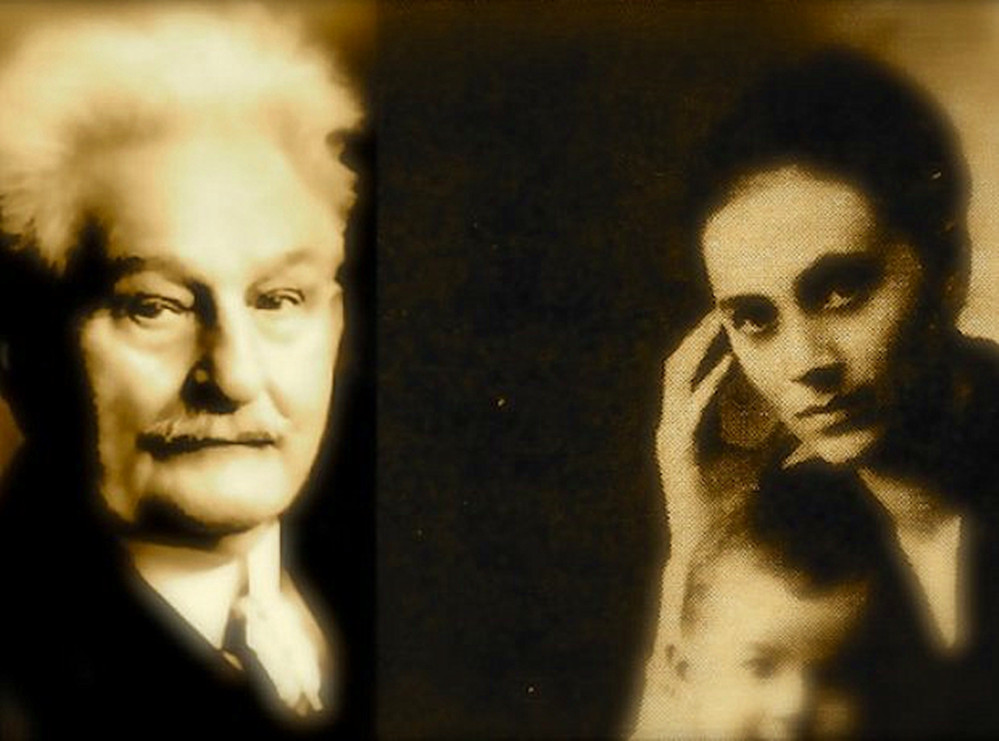 |
|
| |
莱奥什·亚纳切克(Leos Janacek)
和他的情人卡米拉.斯托斯罗娃(Kamila Stosslova) |
|
|
|
| |
雅纳切克的情人 |
|
|
|
| |
诺曼·莱布雷希特
译/盛韵
对于中年失意的男性艺术家来说,没有什么故事能比大老粗——捷克作曲家雅纳切克的晚年桃花运更励志了。
一个小地方的音乐大师,声名未超过家乡布尔诺之外,61岁的雅纳切克无精打采地在布拉格国家大剧院上演了自己的歌剧《耶努发》(1916年5月),这是他在女儿垂死时写的一出灼人的哀恸悲剧。
一夜成名使这位白发老人立时陷入了诱惑的漩涡。歌剧院光彩照人的女中音加布里埃拉·霍尔瓦托娃(Gabriela
Horvatova)在一个度假温泉把他迷得团团转,逼得他太太泽丹卡自杀未遂。泽丹卡恢复后,他强迫她允许加布里埃拉来家里过夜。
第二年夏天,他又去了同一处温泉,看上一个20多岁的少妇,带着两个小儿子,丈夫远在战场。卡米拉·斯托斯洛娃(Kamila
Stösslova)没有迎合他。她对自己的婚姻还算满意,时髦帽子下的身形已经开始发胖,从身体到智力,她都不算特别吸引人,谈吐也就相当于推销员太太的那种水平。然而雅纳切克在他生命的最后12年,给卡米拉写了700封情书,想尽一切办法跟她在一起。1928年8月,74岁的雅纳切克因为去树林里寻找卡米拉迷路的孩子而得了热伤风,一病不起。
他对卡米拉的爱启发了一系列杰作,这在任何相似年纪的作曲家中是极为罕见的。这些作品包括歌剧《卡佳·卡芭诺娃》、《狡猾的小狐狸》、《马克普洛斯案件》、《死屋》,一首惊人的《格拉高里弥撒》,两首露骨的弦乐四重奏—第一首叫《克鲁采奏鸣曲》,以托尔斯泰描写夫妻仇视和性嫉妒的短篇小说为蓝本;第二首叫《私密情书》,包含了雅纳切克给卡米拉的情书的直接引用。
这些作品既不高尚也不敦厚。它们充满了一个老男人被爱情焕发出的青春激情,他不停地要求卡米拉放弃贞操的念头。这些情书成了雅纳切克晚期杰作的连续评注,是艺术创作的心电图。不过泽丹卡的私人日记和与女仆的对话则成了刻薄的“反文本”。
“泽丹卡知道我爱你,而且会爱你至死。”雅纳切克这样告诉卡米拉。
“你偷走了我的丈夫,还毁了他。”泽丹卡在作曲家尸骨未寒时痛骂卡米拉。
卡米拉将雅纳切克送她的金戒指扔进了泽丹卡的手袋,说:“他死了你应该高兴,至少现在你清静了。”
《第二弦乐四重奏》用绝美的音乐来表现作曲家的热情,对抗他生活中附属的丑陋矛盾,一个乐句中同时包含的那种柔情和残酷,根本无法用音乐术语去阐释。乐手们只是照例演奏谱上的音符,但这需要一个天才的作家去说明其中的人性困境。
都柏林之门剧院的总经理迈克·科根(Michael Colgan)给了有“爱尔兰的契诃夫”之称的布莱恩·弗里尔(Brian
Friel)一本英文版的雅纳切克书信,移情作用瞬间发生。
布莱恩立刻开始酝酿一出新戏。这可不是寻常的客厅戏,弗里尔像雅纳切克一样,也是个老狐狸。一个二流作家会把故事背景放在世纪初,大量引用雅纳切克的热情之词和卡米拉的笨拙回应。但弗里尔决定从当下的角度来描述雅纳切克,一群年轻的四重奏乐手在休息室里争论《私密情书》的乐谱,雅纳切克的幽灵在角落游荡。
这一手段极为有效,既满足了戏剧冲突,也体现了音乐直觉。因为我们看到的舞台上的雅纳切克,是通过死后出版的作品和音乐学研究去了解的。
这出戏的看点在幽灵与一个明显是处女的天真妹博士生的争执,后者决意要找出他对卡米拉之爱的真相。弗里尔是个愤怒老年,他受不了将雅纳切克和卡米拉的关系描述成但丁和比阿特丽丝——作为爱人和缪斯。他的方式更微妙,更令人满意。他将卡米拉视为作曲家创造的神话,一种老人寻找灵感的必要虚构。这并不是说她不是真人。卡米拉是个矮胖的家庭妇女,毫无性感可言,脑力也不发达。作曲家在她身上看到的是一块模板,一张白纸,可以任由他天马行空地想象。
弗里尔洞悉的这种关联十分接近创作天机。弗里尔使得雅纳切克的拥趸立刻分裂成两个阵营,浪漫派和理性派。
剧院导演斯坦恩说:“我巴不得看到他们在酒吧里打起来。这不是传统剧院会上演的传统戏剧。布莱恩使用语言和音乐的灵巧是我们在汤姆·斯托帕(TomStoppard)写《每个好孩子都值得爱护》之后,30年来第一次看到。”
拿汤姆·斯托帕打比方当然很恰切,这出戏对音乐创作的社会语境的尖锐洞见也是我自彼得·沙弗的《莫扎特传》之后所未见的。那聪明的台词捕捉到了大部分音乐家所无法领会的音乐关系的本质。表演更关乎本质而非表象,它鼓励我们超越闲言八卦,接受艺术的自然法则—艺术只有在艺术家感受痛苦时才会诞生。
雅纳切克故事的终极悲剧在于卡米拉。她43岁那年死于癌症,离雅纳切克去世仅7年。她没有责备任何人,尤其是那个将她从芸芸众生中挑选出来赐以不朽的礼物的沉迷幻想的老人。
|
|
|
|
| |
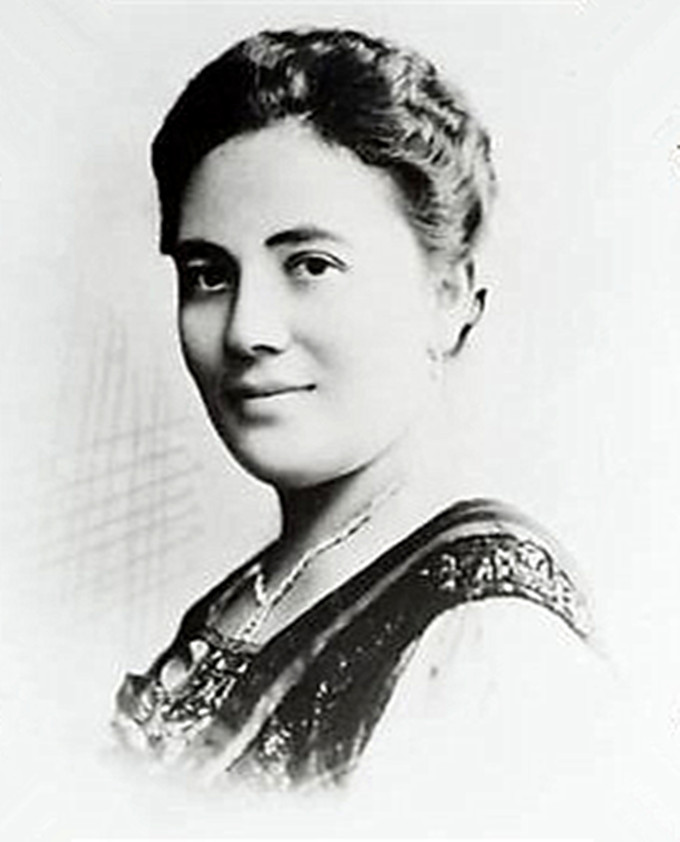 |
|
|
|
| |
亚纳切克的情人卡米拉.斯托斯罗娃(Kamila Stosslova) |
|
|
|
| |
Yanacek's lover,
Kamila Stosslova |
|
|
|
| |
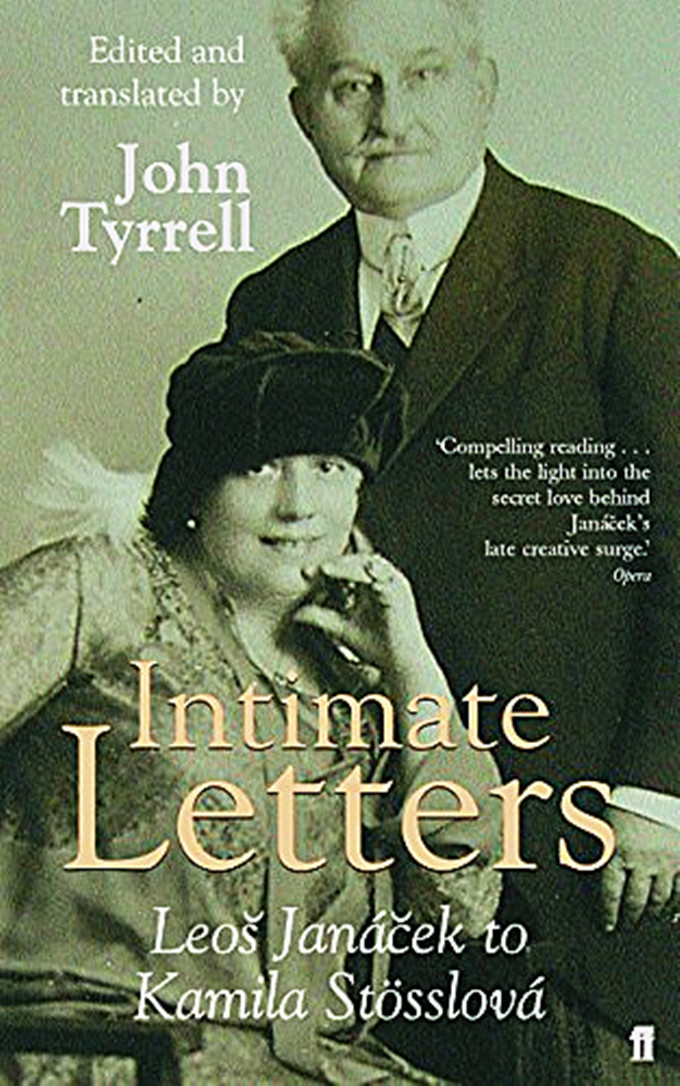 |
|
|
|
| |
莱奥什·亚纳切克(Leos
Janacek) 和卡米拉.斯托斯罗娃(Kamila Stosslova)通信集(约翰·泰勒编辑 翻译) |
|
|
|
| |
Leos Janacek to
Kamila Stosslova Intimate Letters
Edited and translated by John Tyrrell |
|
|
|
| |
Janacek's lover |
|
|
|
| |
Norman Lebrecht
Translation/ShengYun
For frustrated male artists in middle age, there are few stories
more inspiring than the romantic love in the later years of
Czech composer Janacek's burly life.
A master of music in a small area not known beyond his home town
of Brno, janacek, 61, languidly staged his opera "Enoufal" (May
1916), a poignant tragedy he wrote when his daughter was dying,
at the National Theatre in Prague.
Overnight fame threw the white-haired old man into a vortex of
temptation.The opera house's glittering mezzo-soprano, Gabriela
Horvatova, mesmerized him at a resort spa, forcing his wife,
Zedanca, to attempt suicide.When Zedanca recovered, he forced
her to allow Gabriella to come over for the night.
The next summer, he went to the same hot spring and saw a young
woman in her twenties with two young sons and a husband away in
the war.Kamila Stosslova didn't pander to him.She was satisfied
with her marriage, had grown stout under the fashionable bonnet,
was not particularly attractive in body or mind, and spoke with
the air of a saleswoman.In the last 12 years of his life,
however, Janacek wrote 700 love letters to Camilla, trying
everything to be with her.In August 1928, At the age of 74,
Janacek caught a fever while searching the woods for Camilla's
lost child.
His love for Camilla inspired a series of masterpieces that are
rare among any composer of a similar age.These works include
opera "ba katja Camille nova", "the cunning fox", "Ma Kepu luo
case", "the dead" house, a startling gamla observed mass, two
explicit string quartet - the first a song called "crewe mining
sonata", by Tolstoy description is based on the short stories
couples sexual jealousy and hatred;The second, private Love
Letters, contains a direct reference to Janacek's love letter to
Camilla.
These works are neither noble nor honest.They are filled with
the youthful passion of an old man in love, who keeps asking
Camilla to give up her virginity.The letters became continuous
commentaries on Janacek's later masterpieces, electrocardiograms
of artistic creation.But Zedanca's personal diaries and
conversations with the maid became vitriolic antitexts.
"Zedanka knows I love you and will love you to death."Janacek
told Camilla.
"You stole my husband and destroyed him."Zedanca swore at
Camilla while the composer was still alive.
"You should be happy he's dead," camilla said, throwing the gold
ring Janacek had given her into Zedanka's handbag. "At least now
you're alone."
String Quartet No. 2 USES beautiful music to express the
composer's passion and to counter the ugly contradictions
attached to his life. A phrase contains both tenderness and
cruelty of a kind that cannot be explained in musical
terms.Musicians routinely play the notes on the score, but it
takes a talented writer to illustrate the human dilemma.
When Michael Colgan, the general manager of the Dublin Gate
Theatre, gave Brian Friel, known as "Ireland's Chekhov", an
English version of Janacek's letters, the empathy was
instantaneous.
Brian immediately began to incubate a new play.This is no
ordinary drawing-room play, and Freer, like Janacek, is an old
fox.A second-rate writer would set the story at the turn of the
century, lavishly quoting Janacek's warm words and Camilla's
clumsy responses.But Mr. Freer decides to describe Janacek in
the present moment, as a group of young quartets debate the
score for "Intimate Love Letters" in the lounge, janacek's ghost
wandering around the corner.
This technique is extremely effective, satisfying both dramatic
conflict and musical intuition.Because we see Janacek on the
stage, through posthumously published works and musicological
studies.
The point of the play is a dispute between the ghost and a
naive, apparently virgin PhD student who is determined to find
out the truth about his love for Camilla.An angry old man, He
could not bear to describe Janacek's relationship with Camilla
as Dante and Beatrice -- lovers and MUSES.His approach is more
subtle and satisfying.He sees Camilla as a composer's myth, a
necessary fiction for old people looking for inspiration.That's
not to say she's not real.Camilla was a dumpy housewife with no
sex appeal and no brain power.What the composer saw in her was a
template, a blank sheet of paper, to let his imagination run
wild.
The connection That Freer sees is close to the creative
genius.Mr Freer immediately split Janacek's followers into two
camps, romantics and rationalists.
"I would love to see them fighting in the pub," said Theatre
director Stein.This is not a traditional play performed in a
traditional theatre.Brian's verbal and musical dexterity is the
first we've seen in 30 years since TomStoppard wrote 'every good
child deserves love.'"
The Tom Stoppard analogy is certainly appropriate, and the
play's sharp insight into the social context of musical
composition is something I haven't seen since Peter Shaffer's
Mozart.That clever line captures the essence of musical
relationships that most musicians fail to grasp.Performance is
more about substance than appearance, and it encourages us to
rise above gossip and accept the natural law of art -- that art
is born only when the artist feels pain.
The ultimate tragedy of janacek's story lies in Camilla.She died
of cancer at age 43, just seven years after Janacek's death.She
blamed no one, least of all the fanciful old man who had singled
her out from the crowd for the immortal gift. |
|
|
|
| |
|
|
|
|
| |
Today in
the history of music
On July
30, 1928, at the age of 75, Janacek embarked on his grand tour
of Hookwaldi, accompanied by his lover, Kamila Stosslova
(1891-1935), her husband and their 11-year-old son.
Lai osh, and (Jana č ek, Leo š 1854-1928), life long productive,
creative, investigate its root, is a slow and patient his
achievements.The greatest achievement was a series of original
operas, both exuberant and lively, unsurpassed by other
musicians of the same period.
Janacek was the son of a village headmaster in Moravia (later
Czechoslovakia).His musical career began as a conductor in the
Choir of The St. Augustine Monastery in Brno.Whether singing
solo or in chorus, the human voice is always his source of
inspiration.He trained as a teacher and was certified as an
ordinary teacher. He was active on the music stage in Brno,
where he spent most of his time as a teacher and choir
conductor, and sometimes he went to Prague, Leipzig and Vienna
for short courses.
In 1880 Janacek became a full-time music teacher, and the
following year married his piano student, 15-year-old
Shurzova.The relationship between a passionate, patriotic Czech
and a stubborn German girl was strained over time and never
really improved.
In the 1980s, Janacek's career as a conductor, teacher, and
music manager peaked, and he began to take shape as a
composer.His early works are clearly in the style of dvorak and
Smettana in the 19th century;He was also very interested in the
folk music of Moravia and spent a lot of time editing and
playing it.
After one or two opera composer, and write the first opera in
1894 to 1901 and the slave hair, mixed material and colorful
folk songs to start his own drama opera style at an organic
whole, music with the inflection of words change, it will form a
direct and real performance effect, with many in the 19th
century opera show exaggeration of the perceptual effect is
completely different.
At the age of 50, Janacek had a successful premiere in Brno,
which led him to devote more time to composing over the next
decade. The two operas, "Destiny" and "Mr. Brucek's Journey",
were completed at that time.Indeed, the huge success of the
first performance of "Yernufa" in 1916 ushered in a fertile
period for the 62-year-old composer.
Another factor that inspired him was his infatuation and
unrequited love for Camilla Stothlova.Camilla Stothlova is the
wife of an antique dealer, and Bianacek is 38 years
younger.Emotional twists and wild fantasies are evident in some
of his works, such as the "Diary of the Disappeared" and "The
Second String Quartet" (also known as "Heart Talk").At that
time, some operas such as Kata Kabanova and The Sly Little Fox
were very successful. They were performed in Berlin, London and
New York in the 1920s, and Yanacek began to achieve worldwide
fame.
In his 70s, the composer wrote two of his most popular pieces:
the 1926 "Little Symphony," inspired by a brass band playing in
a Prague park;In 1927 he wrote The Mass of Gregory.The final
opera, "The House of the Dead," was largely completed when he
died in 1928, ending a late, prolific and brilliant life like
that of Haydn and Verdi.
Video for today: 1. The Kubin Quartet performs "Kreutzer
Sonata", the first string quartet of Janacek; 2.2. The Cunning
Little Fox by Janacek;The Panoha Quartet performs The Yanacek
String Quartet No. 2, 'Xin Yan'. |
|
|
|
| |
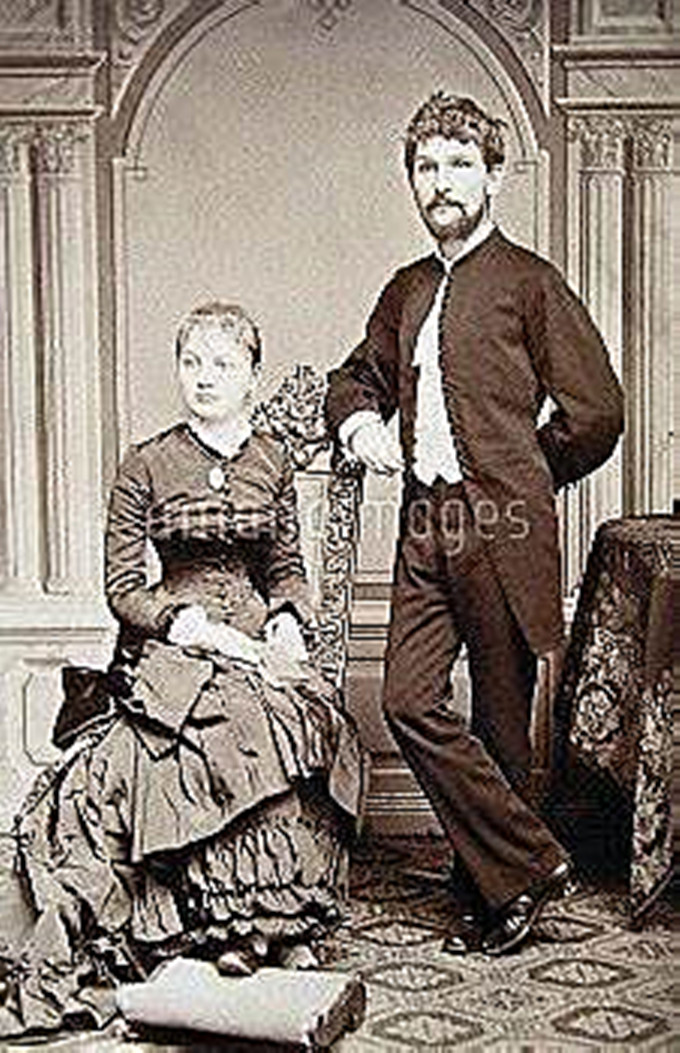 |
|
| |
莱奥什·亚纳切克(Leos
Janacek)和夫人 |
|
|
|
| |
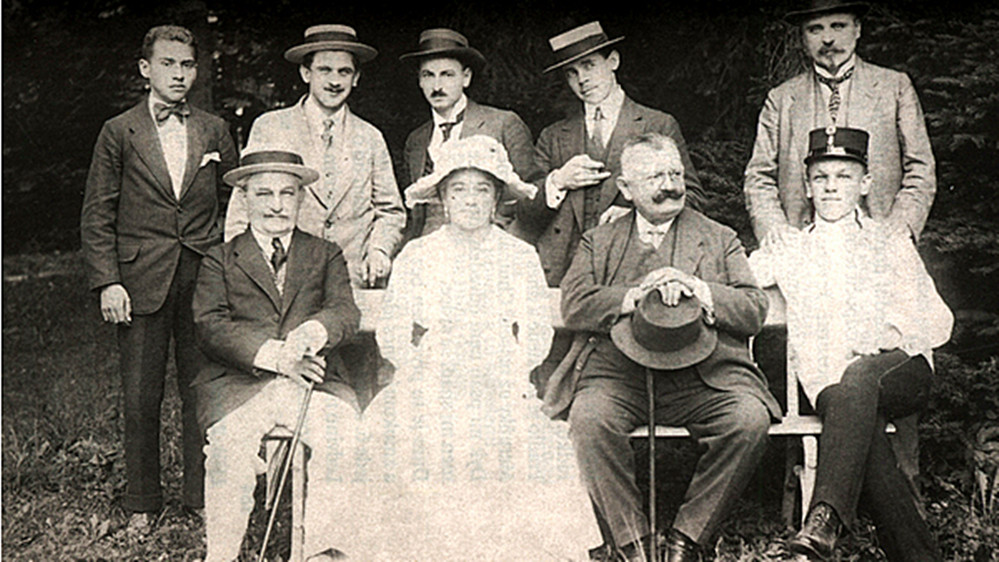 |
|
| |
莱奥什·亚纳切克(Leos
Janacek)度假时和朋友在一起 |
|
|
|
| |
摩拉维亚的民间音乐影响了亚纳切克的创作
随着他对摩拉维亚民间音乐越来越感兴趣,他的作品经常表现出明显的捷克风格。在他的一生中,他的作品保持高度原创,大部分他最著名的作品是在他生命的最后十年产生的。当时他生活中最重要的因素之一就是他对一位年轻的已婚妇女卡米拉·斯托斯洛娃的喜爱。虽然她没有回报他的感情,但作曲家对卡米拉的热情无疑激发了他的创造力。
莱奥斯·亚纳切克的作品,尤其是他的最后四部歌剧,《Kat’a
Kabanova》(1921)、《狡猾的小狐狸》(1924)、《Makropulos
Affair》(1926)和《来自亡灵之屋》,都因其戏剧性的影响而受到赞赏。这些歌剧虽然简短,却讲述了一个非常复杂的故事。由于作曲家根据捷克语的节奏和音调特点改编了他的音乐,从而增加了戏剧效果,这是他多年来研究本国语言的变化后的专家。
|
|
|
|
| |
Moravian
Folk Music Influenced Janacek's Compositions
His works often showed a distinctly Czech style as he became
increasingly interested in Moravian folk music. Throughout his
life his work remained highly original with most of his
best-known works being produced in the last ten years of his
life. One of the most important factors in his life at that time
was his affection for a younger married woman, Kamila Stosslova.
Although she did not reciprocate his affections, the composer’s
passion for Kamila certainly inspired his creativity.
Leos Janacek's work, and especially his last four operas, Kat'a
Kabanova (1921), The Cunning Little Vixen (1924), The Makropulos
Affair (1926) and From the House of the Dead, are admired for
their dramatic impact. Although brief, these operas tell a
highly complex story. The dramatic effect is increased because
the composer adapts his music to the rhythmic and tonal
characteristics of the Czech language, something he was an
expert at after studying the inflections of his native tongue
for so many years. |
|
|
|
| |
|
|
|
|
| |
|
|
| |
【捷克音乐】雅那切克歌剧《狡猾的小狐狸》 |
|
|
|
| |
《狡猾的小狐狸》是亚纳切克的第十部歌剧,也是东欧相当重要的代表性歌剧。此剧取自捷克民间传说,剧中的动物与人类有了交流,从一只小狐狸眼中可以看到人类的感情世界,从音乐的角度又发现动物的语汇。亚纳切克让这部歌剧不再只是单纯的童话寓言,还表现出当年69岁的作曲家对于世间百态的精心刻画。 |
|
|
|
| |
The Sly Little Fox
is Janacek's tenth opera, and also a very important representative opera
in Eastern Europe.Taken from Czech folklore, the animals in the play
communicate with human beings. From the eyes of a little fox, we can see
the emotional world of human beings. From the perspective of music, we
can also find the vocabulary of animals.Yanacek made the opera more than
just a fairy tale or fable. It also showed the 69-year-old composer's
meticulous depiction of the world. |
|
|
|
| |
《狡猾的小狐狸》是亚纳切克的第十部歌剧,也是东欧相当重要的代表性歌剧。此剧取自捷克民间传说,剧中的动物与人类有了交流,从一只小狐狸眼中可以看到人类的感情世界,从音乐的角度又发现动物的语汇。亚纳切克让这部歌剧不再只是单纯的童话寓言,还表现出当年69岁的作曲家对于世间百态的精心刻画。 |
|
|
|
| |
The
Sly Little Fox is Janacek's tenth opera, and also a very
important representative opera in Eastern Europe.Taken from
Czech folklore, the animals in the play communicate with human
beings. From the eyes of a little fox, we can see the emotional
world of human beings. From the perspective of music, we can
also find the vocabulary of animals.Yanacek made the opera more
than just a fairy tale or fable. It also showed the 69-year-old
composer's meticulous depiction of the world. |
|
|
|
| |
|
|
|
|
| |
|
|
|
|
| |
帕诺哈四重奏组演奏 雅纳切克第二弦乐四重奏'心言' |
|
|
|
| |
帕诺哈扮演雅纳切克: 第二弦乐四重奏“心言”(1928)
第一小提琴:吉里·帕诺卡
第二小提琴:帕维尔·泽法特
中提琴:米罗斯拉夫·塞特卡
大提琴:贾罗斯拉夫·库尔汉
拉涅罗·塔兹- 工作室艺术中心 |
|
|
|
| |
| |
Panocha Quartet plays Leos Janacek: Quartet N. 2 "Intimate
letters" (1928)
1st Violin: Jiri Panocha
2nd Violin: Pavel Zejfart
Viola: Miroslav Sehnoutka
Cello: Jaroslav Kulhan
Raniero Tazzi - Studio Art Conc |
|
|
|
|
|
| |
|
|
|
|
| |
未得原作者编者授权严禁转载www.mt77.com任何内容 |
|
|
|
|
|
|
|
|
|
|
|
|
|
|


